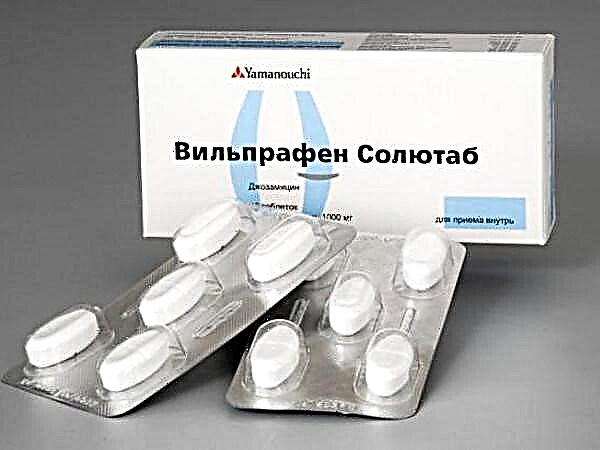
Obstetrics and gynecology is a branch of medicine in which methods, instruments and assistive devices are constantly updated. Obstetrics is developing at a rapid pace, and many of the devices and medicines that were previously used to stimulate labor are now fading into the background. This also applies to the Foley catheter, which was previously used often, but today it is used much less often.
We will tell you about what this device is and how it is used to open the cervix in this article.
What it is?
This useful invention has historical roots in the most ancient times. The ancient Greeks invented to remove fluids from cavities using a thin tube, but the catheter has existed in our usual form since the 19th century.
A Foley catheter is a medical device that takes a well-deserved first place among urological products. Initially, it was used only for administration to the bladder via the urinary tract. This remains its application today. The catheter is used for both male and female patients.

Also this the device is used by obstetricians to stimulate labor... With the introduction of a thin tube through the genital tract into the cervix, an artificial expansion of the round muscle of the cervix occurs, which is the induction of labor, if the term has approached, and they do not occur, or for other reasons, when it is required to accelerate the birth of the child.
The device is a thin silicone-coated latex tube and a small air balloon on the distal end of the catheter. Due to the material from which it is made, the catheter possesses great elasticity and flexibility.
There are different sizes that are designed for different needs. For urine diversion in case of urological problems or during surgery, some Foley catheters are used, others are used to stimulate labor. To speed up the onset of labor, a woman is usually inserted into the cervical canal with a two-way catheter # 18.

Self-introduction of the catheter is not possible. This is quite dangerous for the health of the woman and the fetus. The Foley catheter is used only in gynecological hospitals, maternity hospitals and perinatal centers.
The current clinical guidelines of the Ministry of Health allow the use of this device for medical reasons, which we will discuss below. But in practice obstetricians are increasingly giving preference to other methods of stimulating labor - hormonal gels and tablets, kelp sticks... This is due to a rather high percentage of the likelihood of the lack of the desired effect and discomfort when the catheter is inserted.
Officially, the procedure is considered painless and safe if it is performed in a hospital environment by qualified medical personnel.
Indications for use
The decision about the advisability of using a Foley catheter is made by the doctor if it is necessary to induce labor as soon as possible.
According to the recommendations of the Russian Ministry of Health, a catheter and other methods of labor induction can be used for:
- prolongation of pregnancy - for a period of 41-42 weeks or more;
- exacerbation of chronic diseases of the mother, in which prolongation of pregnancy can harm the woman;
- diseases of the cardiovascular system;
- deterioration of the fetus;
- outpouring of water in the absence of contractions;
- weak and irregular labor;
- large fruit or multiple fruits.
When choosing an induction method, a variety of factors are taken into account, and sometimes a Foley catheter is preferable or the only possible one.
Contraindications
There is a list of reasons why a Foley catheter is not recommended for a particular woman in labor.
A catheter is not inserted if a woman has:
- cervicitis;
- vaginitis;
- genital herpes in the active stage;
- bleeding;
- water leakage;
- genital tract infections;
- immature cervix, no dilatation;
- location of the placenta below the normal level.


All these situations create increased risks of intrauterine infection of the fetus before childbirth.
How is it determined whether it hurts?
As already mentioned, only a medical specialist with a status not lower than a doctor can install a catheter. He has strict instructions to follow when placing a Foley catheter. The procedure itself is pretty quick.
It consists of the following stages.
- All possible risks are assessed, a balanced and well-grounded decision is made. The data is recorded in the birth history.
- The genital tract is disinfected.
- Instruments and mirrors are used exclusively sterile for manipulation, the doctor works in sterile clean gloves.
- The thin end of the catheter is inserted into the cervical canal through the vagina so that the air balloon is located above the entrance to the uterus.

- 10 ml of liquid (usually water) is injected into the balloon from the syringe.
- The balloon that has grown in size begins to press on the cervix, stimulating it to open and start regular labor pains. Saline can be additionally injected through the catheter into the fetal bladder.
- The outer end of the catheter is fixed to the thigh and fixed with a medical plaster (preferably bactericidal).
- The Foley catheter remains in the cervical canal and genital tract for 24 hours. If during this time labor begins, it is removed, if labor does not begin, a day later, a decision is made on stimulation by other methods, for example, medication after using an amniotomy.

A woman needs to be extremely careful during these days. It is strictly forbidden to remove the catheter, as this can cause an infection to enter the uterine cavity.
Intrauterine infections are extremely dangerous for the baby. The procedure is simple but dangerous if performed by a non-professional medical professional. therefore it is impossible to try to stimulate labor at home in this way.
The woman's sensations are described as painful - both in the process of introducing the catheter into the cervical canal, and during the entire stay with the catheter, there is an increase in discharge, lower back pain. But the main thing is that the catheter helps not even half of pregnant women, but a much smaller number, which is why the use of the device in modern obstetrics is rather limited.

Possible complications
The attitude of doctors to this medical device is ambiguous also for the reason that it can cause complications. They can be both quick and delayed.
The category of ambulances includes situations in which problems with the catheter itself are observed after insertion. These are all sorts of troubles - from the balloon falling out to the leakage of the liquid pumped into it. Many complications relate not so much to the catheter itself as to the fact that labor has been stimulated. Recently, it is believed that interference in the affairs of nature is not beneficial to either the mother or the child..
In connection with the fact of induction, weakness of the labor forces often develops, in which contractions are ineffective, do not lead to cervical opening or stimulate a very slow opening. Weakness can also develop in the second stage of labor - pushing.

Sometimes women who have had a Foley catheter placed before childbirth find it more difficult to recover from the birth process, the likelihood of infectious and inflammatory diseases of the uterus and cervix is higher.
Childbirth can begin, according to reviews, and before the catheter is removed from the cervical canal, but this situation is solved quite easily, because during a gynecological examination, the catheter is removed quickly.
How to care?
A woman getting a Foley catheter is usually told how to properly care for it during the day. The rules are explained by the doctor who installed the device. They need to be followed strictly if you want to give birth to a healthy baby and quickly bounce back after giving birth.
First of all, a woman needs to remember about the requirements of a hygienic sense. The skin around the installed medical device must be clean. Each time, before touching the external genitals, you should thoroughly wash your hands with warm water and soap.

Do not wash the perineum in the area adjacent to the inserted catheter. A woman can wear underwear, but only sewn from natural cotton fabrics.
Do not be reminded once again that panties should be extremely clean. Underpants should not squeeze or deform the catheter... It is important to ensure that this does not happen when moving. But to flush or reinstall the catheter during the stimulation of labor is usually not required - its use in obstetrics is one-time.
For more information on what a Foley catheter is, see the next video.



